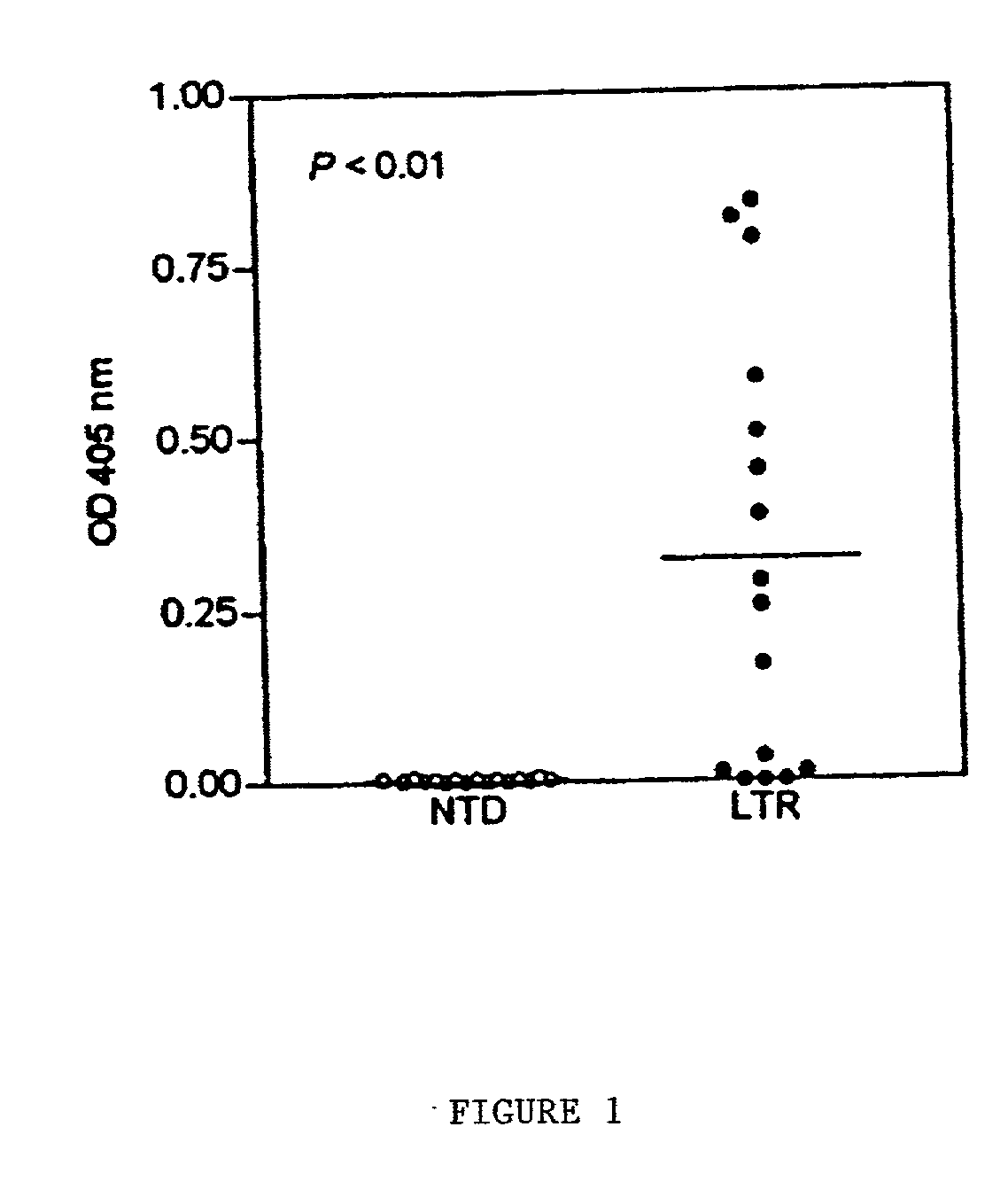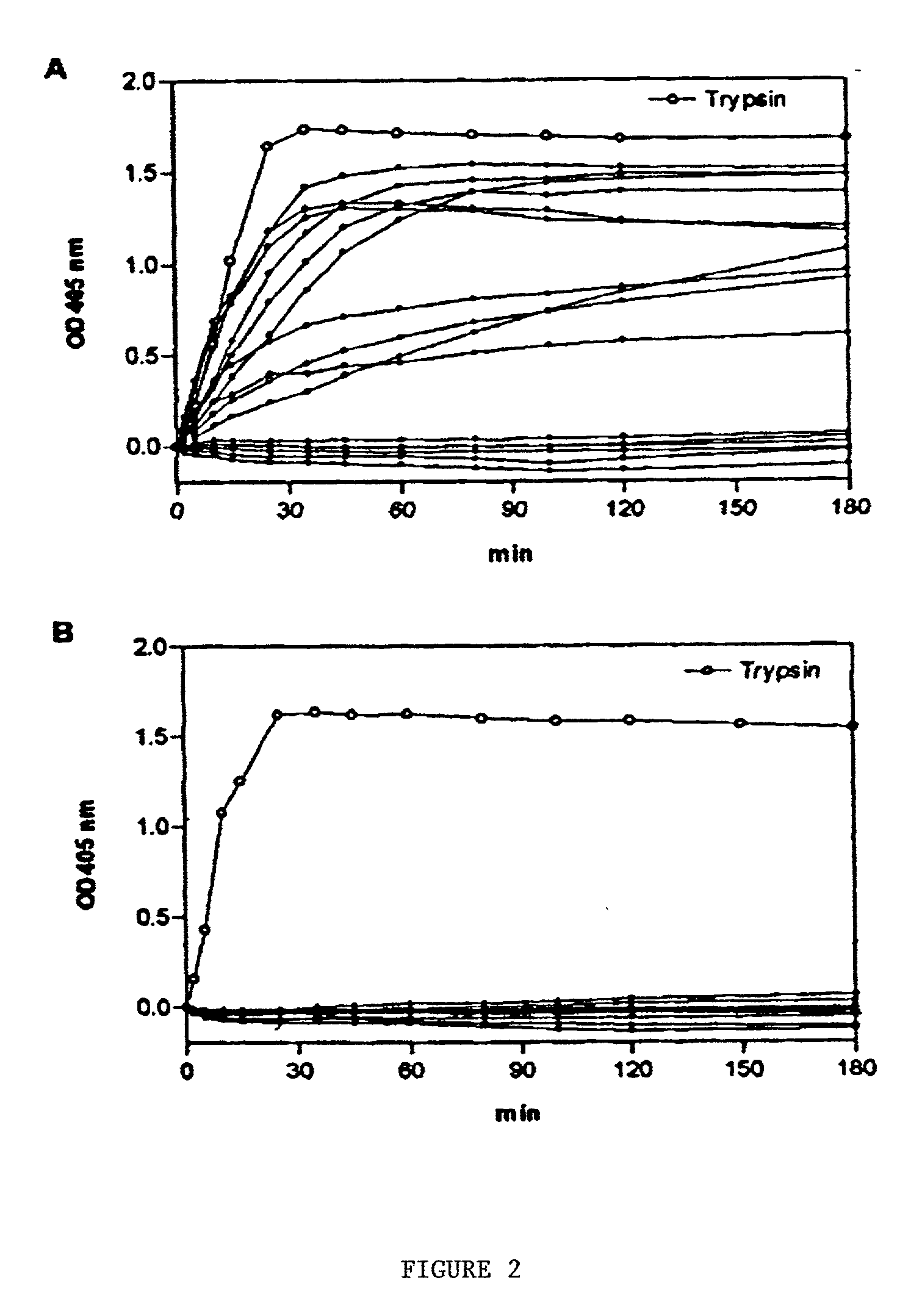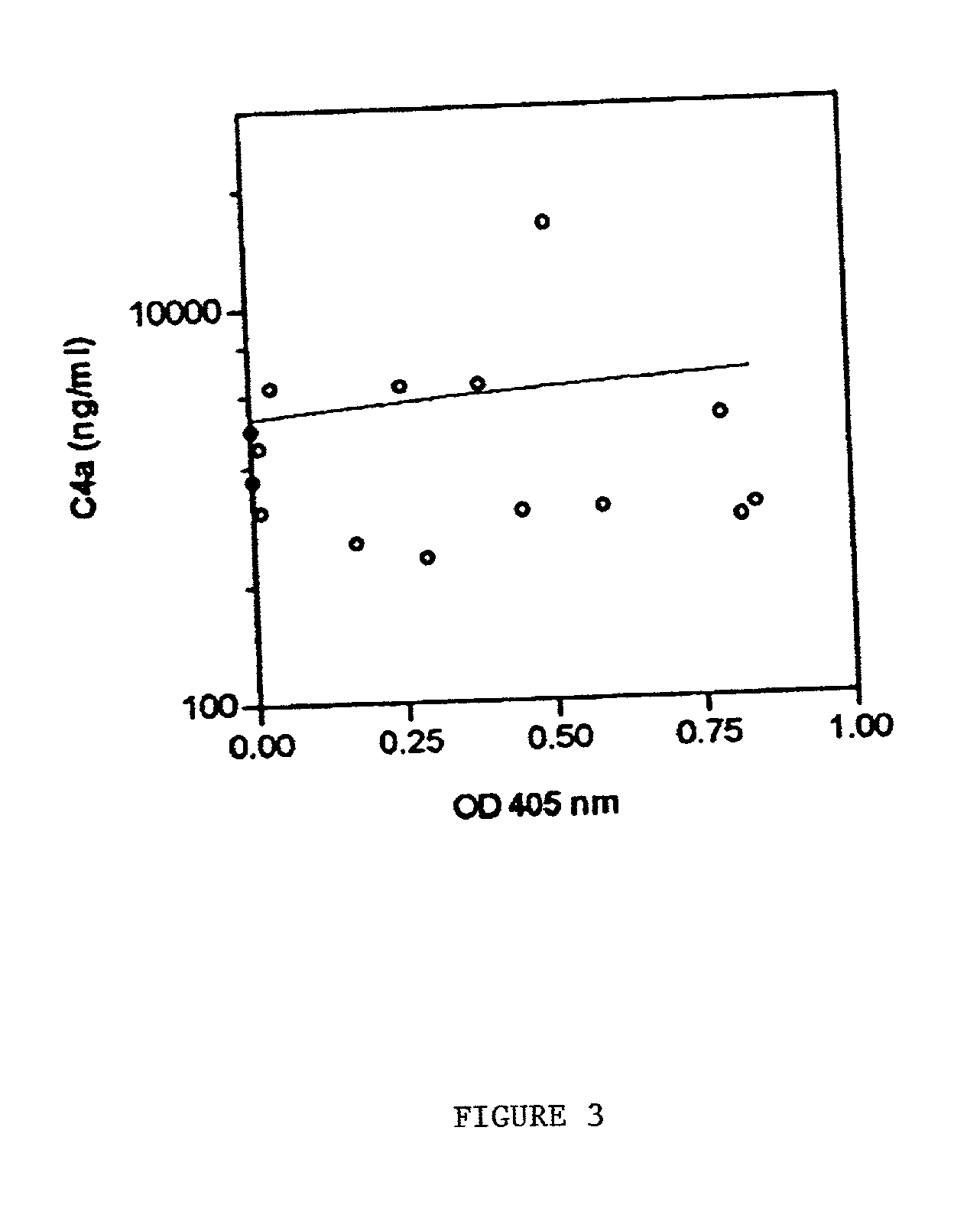Diagnostic markers of liver dysfunction
a technology of liver dysfunction and diagnostic markers, applied in the field of diagnostic markers of liver dysfunction, can solve the problems of liver disease management deficiency in modern healthcare, and it is not known whether this enzyme may be a useful component of a detection method,
- Summary
- Abstract
- Description
- Claims
- Application Information
AI Technical Summary
Benefits of technology
Problems solved by technology
Method used
Image
Examples
example 1
CHARACTERIZATION OF PLASMA PEPTIDASE ACTIVITY
[0085] This example demonstrates that plasma peptidase activity is elevated in many liver transplant patients, but this activity is not provided by the C4 converting enzyme.
[0086] Patients. Materials and Methods. Blood samples were obtained from healthy non-transplant donors (NTD) and stable orthotopic liver transplant recipients (LTR) under an approved Human Subjects protocol (no. 96-293). Each donor was asked to sign an informed consent form agreeing to be an unidentified voluntary donor. The LTR were free of clinical rejection according to standard evaluations performed at the time that these samples were collected. The liver transplants had been performed in these individuals from 1 month to nearly 4 years prior to the time of sample collection (Table 1).
[0087] Blood samples were drawn into 5 ml EDTA tubes (Venoject; Terumo Corp., Elkton, Md.). The plasma was collected immediately by centrifugation at 2,000.times.g for 15 min at 4.deg...
example 2
IDENTIFICATION OF THE PEPTIDASE ELEVATED IN CERTAIN LIVER TRANSPLANT PATIENTS AS KALLIKREIN OR A KALLIKREIN-LIKE PEPTIDASE
[0094] This example demonstrates that the peptides elevated in the plasma of many liver transplant patients is kallikrein or a kallikrein-like protein. levels of the kallikrein-like peptidase of the current invention are associated with liver disease.
[0095] Gel Filtration. Gel filtration experiments were performed at 4.degree. C. and a flow rate of 10 ml per hour on a Sephacryl S-300 column (2.5.times.45 cm). The column was equilibrated with TBS-EDTA buffer and a 5 ml sample was applied to the column. Fractions of approximately 2.2 ml / tube were collected.
[0096] Immuno blot and immunodiffusion assays. Aliquots of the gel filtered plasma fractions were diluted in PBS and loaded (200 .mu.l per well) onto a nitrocellulose membrane under vacuum. The membranes were blocked for 45 min with 5% nonfat dry milk in PBS. After washing with PBS containing 0.1% Tween-20, the b...
example 3
CORRELATIONS BETWEEN KALLIKREIN AND CLINICAL CONDITIONS
[0110] This example demonstrates that levels of the kallikrein-like peptidase of the current invention are associated with liver damage.
[0111] Determination of Clinical Outcome of Patient. Patients with clinical recurrent HCV and HBV infections were identified histologically by biopsy.
[0112] Correlations between kallikrein and clinical conditions. We investigated the relation between the peptidase activity and the clinical data (see Table 1) in LTR. There was no correlation between the peptidase activity and either rejection (5 of the 16 recipients, numbers 1, 4, 10, 11 and 15) or CMV infection (5 of the 16 recipients, numbers 2, 3, 4, 12 and 16) (see Table 4). All LTR that were examined, except recipient number 16 with autoimmune hepatitis, had HCV and / or hepatitis B virus (HBV) infection before liver transplantation and 10 of the 15 recipients were HCV recurrence positive. The peptidase activity in LTR with viral recurrence wa...
PUM
| Property | Measurement | Unit |
|---|---|---|
| time | aaaaa | aaaaa |
| time | aaaaa | aaaaa |
| visible wavelength | aaaaa | aaaaa |
Abstract
Description
Claims
Application Information
 Login to View More
Login to View More - R&D
- Intellectual Property
- Life Sciences
- Materials
- Tech Scout
- Unparalleled Data Quality
- Higher Quality Content
- 60% Fewer Hallucinations
Browse by: Latest US Patents, China's latest patents, Technical Efficacy Thesaurus, Application Domain, Technology Topic, Popular Technical Reports.
© 2025 PatSnap. All rights reserved.Legal|Privacy policy|Modern Slavery Act Transparency Statement|Sitemap|About US| Contact US: help@patsnap.com



